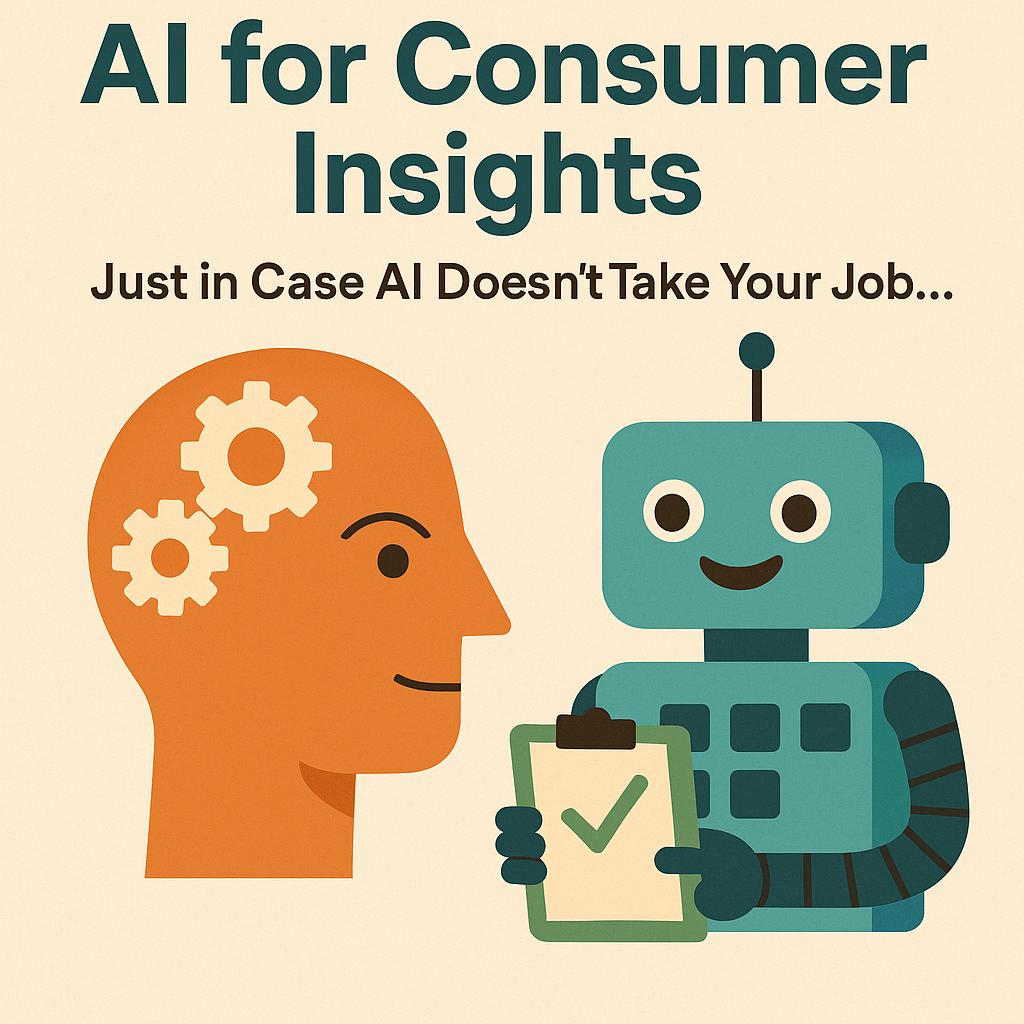
Practical AI Wins in Consumer Insights
AI Consumer Insights
Much has been written recently about AI rapidly replacing human jobs, with bold claims suggesting an imminent future in which AI eliminates all forms of traditional work. However, after engaging extensively with leading AI “reasoning” models such as Claude Sonnet 4, Gemini Pro 2.5, and OpenAI’s o3 across diverse tasks—from generating baby names to using MCPs to help execute complex coding tasks—I am skeptical of the notion that AI will imminently replace human labor.
In addition to well-known issues like hallucinations and limited reasoning capabilities, today’s models simply lack creativity. If every organization turns to AI for strategic guidance, they risk converging on the same ideas—diminishing competitive advantage rather than enhancing it (not unlike the time-honored corporate ritual of paying a consulting firm a fortune to rebrand the same recycled slide deck they hand to every other client…).
Nevertheless, I am excited by the significant opportunities for AI within the field of Consumer Insights. In this blog entry, I will discuss some low-hanging AI fruit that is ready for prime-time right now.
Deep Research
Included in a $20/month ChatGPT subscription (and many other leading AI tools) is access to a “Deep Research” capability. You provide ChatGPT with a research topic, and it will search the web to generate a comprehensive, well-annotated report. I have been impressed by ChatGPT’s ability to (usually) gather data from reputable sources while avoiding junk. The output often rivals what you’d expect from a competent human researcher preparing a white paper. Here is an example report on football inspired fashion. These reports can be a great first step in a broader research effort or used to provide quick intelligence on a topic.
Quality Qual
Qualitative research derived from interviews with target consumers remains one of the richest sources of insight—and it’s particularly well-suited for AI enhancement. A growing number of vendors now offer platforms that integrate AI into every step of the interview workflow, from discussion guide generation to AI-assisted moderation and automated reporting. To make meaningful use of AI—whether through a vendor platform or on your own—you need high-quality audio recordings of each session. While AI can accelerate and enrich the gathering and analysis of qualitative data, it can’t fix poor inputs. The quality of insight still hinges on recruiting the right consumers to interview. Side rant: I’ve heard the sales pitches promoting focus groups composed of AI-generated, synthetic consumers. I wish it was needless to say, but unless you’re trying to sell products to AIs, they are not the right consumers to interview.
Step 1 – Transcription and Translation: Once interviews are recorded, there are a number of easy-to-use tools for transcribing and translating them. For the technically inclined, Whisper and its many forks offer free, accurate transcription and translation capabilities. For a more scrappy approach, tools like Office 365, Apple Intelligence, Slack, and Zoom all offer transcription features that you can misuse to transcribe anything. There are also affordable tools (like MacWhisper) and free apps (like oTranscribe) that get the job done.
Step 2 – Analysis: Once transcribed, interview text can be loaded into a retrieval-augmented generation (RAG) system for AI-assisted analysis. Tools like Google’s NotebookLM let users interact with uploaded content through a familiar chat interface. For those who prefer local control of the data, open-source options like Open WebUI and AnythingLLM enable RAG on local hardware. Still, it’s essential to validate AI-generated insights—hallucinations can and do happen, even in RAG-based systems.
Another, less glamorous option—though potentially less secure and scalable—is to take advantage of the large context windows in today’s top models (ChatGPT, Gemini, Claude, etc.). You can skip the complexity of a RAG setup and simply paste or upload well-labeled transcripts into ChatGPT and chat away about them.
Cure Corporate Amnesia
One of the more frustrating, yet common, pitfalls in corporate consumer insights is the failure to leverage existing knowledge to answer business questions. Insight decks are created, presented, and then forgotten—cursed to the depths of lost Box/Sharepoint links—only to have the same questions re-researched months later. Enter RAG (again). By layering a retrieval-augmented generation (RAG) system on top of your existing research library, teams can use a chat interface to surface relevant insights grounded in prior work. This saves time, budget, and preserves institutional memory. Examples of vendors offering solutions in this space include Snowflake Arctic, Microsoft Azure AI Search, Apache Elastic Search, and Lucidworks.
Final Thoughts
While I’m skeptical of claims that AI is on the verge of replacing work entirely, it clearly is changing work. This wasn’t an exhaustive list by any means, but I hope some of these ideas offered a helpful look at how AI can change Consumer Insights work today.
AI is still far from perfect, which is why it’s important to build a strong intuition for how it actually works. If you’re curious to dig deeper, I recommend this excellent video series—it’s a great introduction to what’s going on under the hood with large language models.
Also, please make sure any AI tools you use comply with your employer’s privacy requirements and consumer consent.